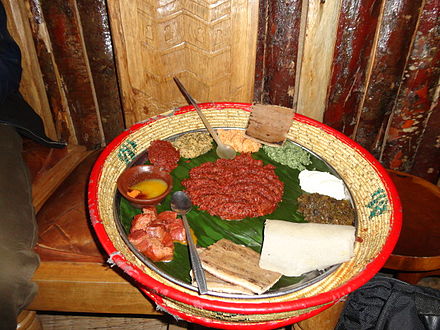Introduction: Understanding Eritrean Cuisine
Eritrean cuisine is a reflection of the country’s diverse cultural and historical influences. It is a blend of various culinary traditions that have shaped the country’s gastronomy. Eritrea is located in the Horn of Africa, and its cuisine is influenced by the country’s geography, climate, and history. The country’s cuisine is characterized by its use of spices, grains, and legumes, and it is known for its unique flavors and spices.
The Role of Food in Eritrean Culture
Food plays a vital role in Eritrean culture, and it is an essential aspect of the country’s social gatherings. In Eritrea, food is used to bring people together and to celebrate important events and occasions like weddings, religious festivals, and other cultural events. Eritrean cuisine is also a way to express cultural identity and pride, as well as to showcase the country’s rich culinary heritage.
Traditional Eritrean Dishes and Ingredients
Some of the traditional Eritrean dishes include injera, a sourdough flatbread made from teff flour; tsebhi, a stew made with various meats like beef, chicken, or lamb and flavored with a mix of spices and herbs; and zigni, a spicy beef stew. Other popular dishes include shiro, a chickpea or lentil-based stew, and ful, a fava bean stew. The country’s cuisine also features an array of vegetables like spinach, kale, and collard greens.
Religious Influence on Eritrean Cuisine
Religion has played a significant role in Eritrean cuisine. The country’s majority religion is Orthodox Christianity, which has influenced the country’s culinary traditions. For instance, many traditional Eritrean dishes are vegetarian, and they are often consumed during the fasting period of Lent.
The Importance of Coffee in Eritrean Culture
Coffee is an integral part of Eritrean culture, and it is often served during social gatherings and important events. Traditional Eritrean coffee is dark, rich, and flavorful, and it is brewed using a unique Ethiopian/Eritrean coffee ceremony, which involves roasting the coffee beans and serving the coffee in small cups.
The Significance of Communal Eating in Eritrea
Communal eating is an important aspect of Eritrean culture. In Eritrea, meals are often shared, and it is common for people to eat from the same plate or platter. This tradition is known as “gursha,” which means “mouthful” in the Tigrigna language. Gursha is a way of showing respect and affection towards others, and it is often used to express hospitality.
Eritrean Cuisine in the Diaspora
Eritrean cuisine has also spread to other parts of the world, especially in the diaspora. Eritrean restaurants can be found in cities around the world, and they serve a range of traditional Eritrean dishes. In the diaspora, food has become an important way to preserve Eritrean culture and to connect with the country’s heritage.
Conclusion: Celebrating the Richness of Eritrean Cuisine
Eritrean cuisine is a reflection of the country’s diverse cultural and historical influences. It is a blend of various culinary traditions that have shaped the country’s gastronomy. The role of food in Eritrean culture is significant, and it is an essential aspect of the country’s social gatherings and celebrations. Eritrean cuisine is an expression of cultural identity and pride, and it is a way of showcasing the country’s rich culinary heritage.

